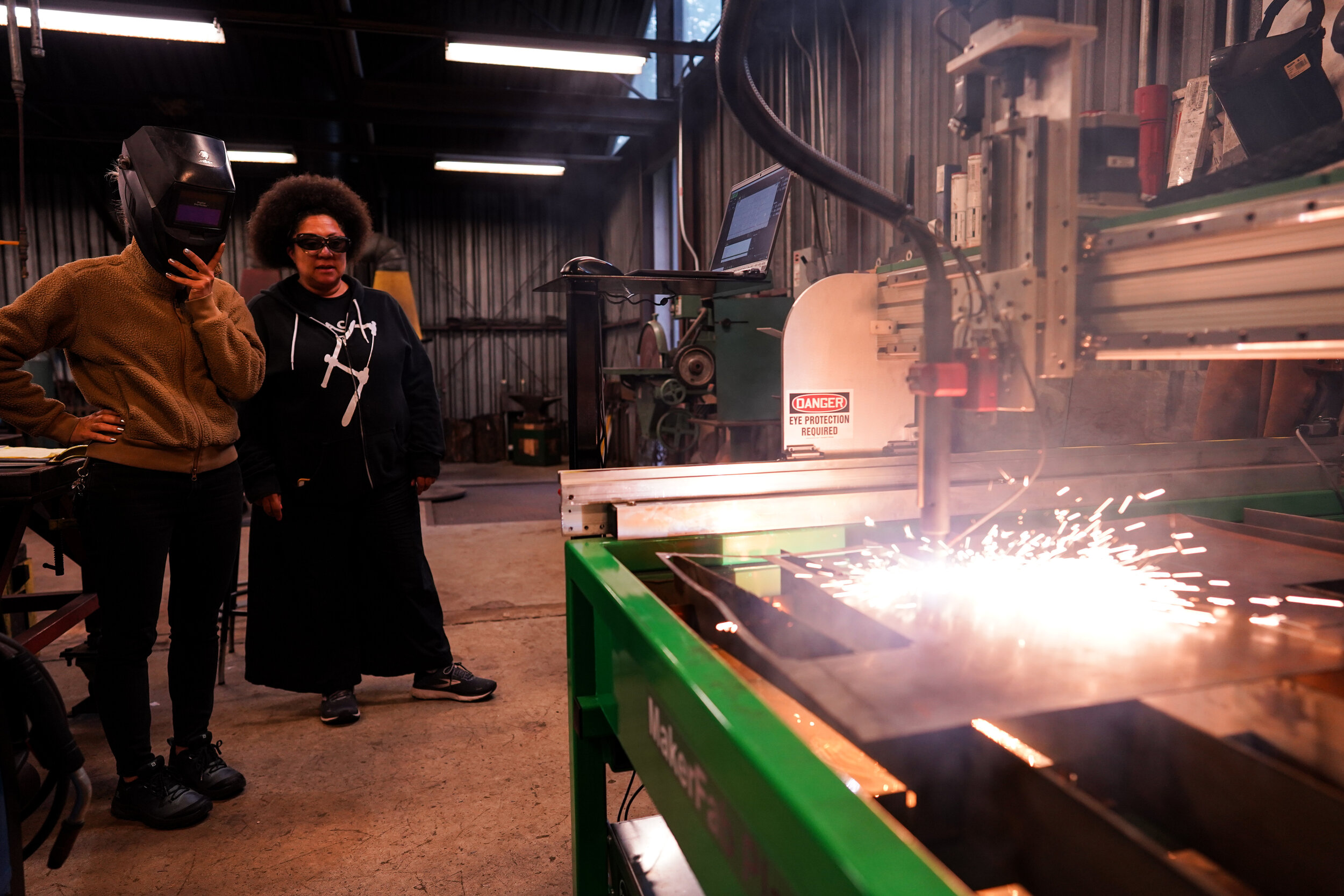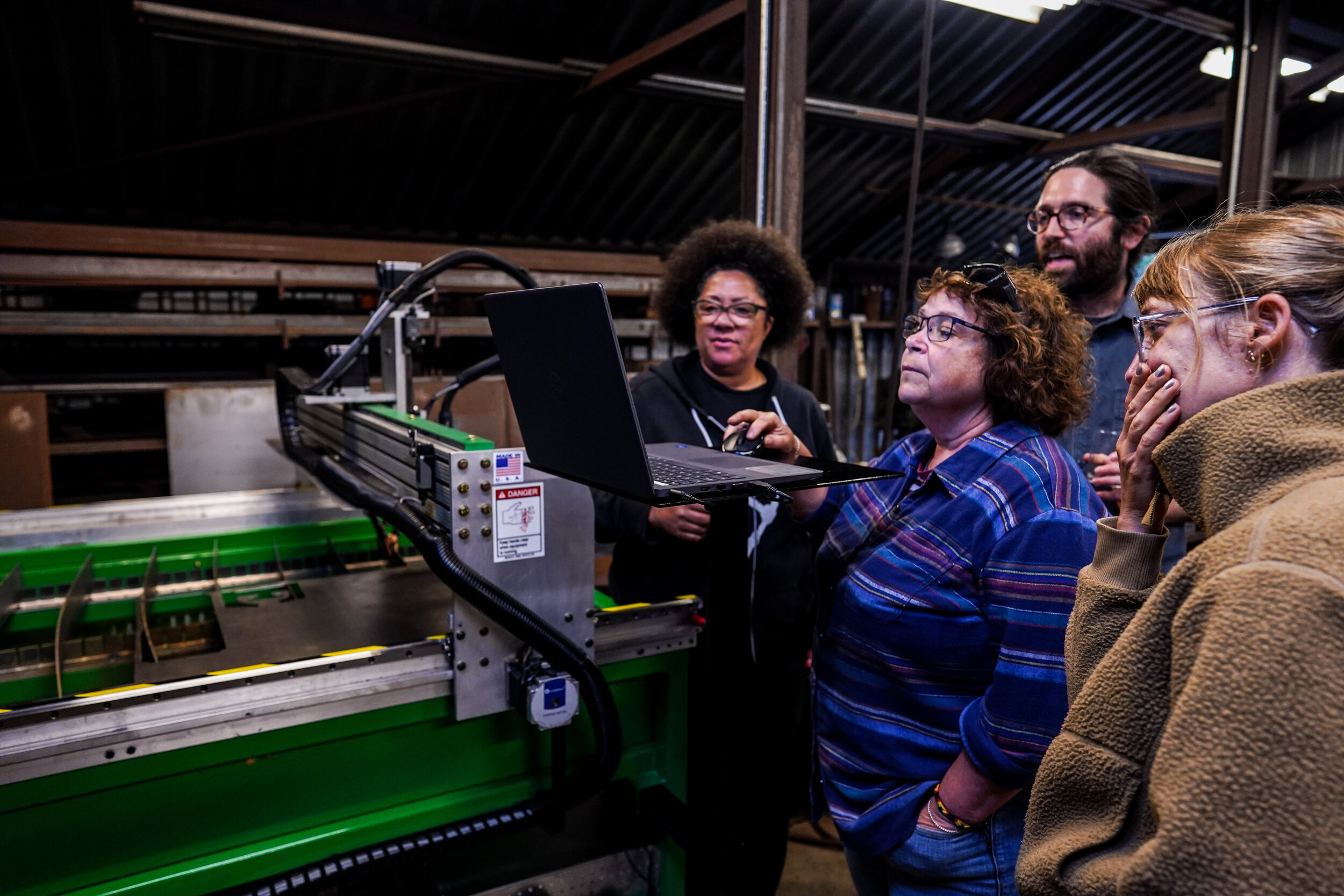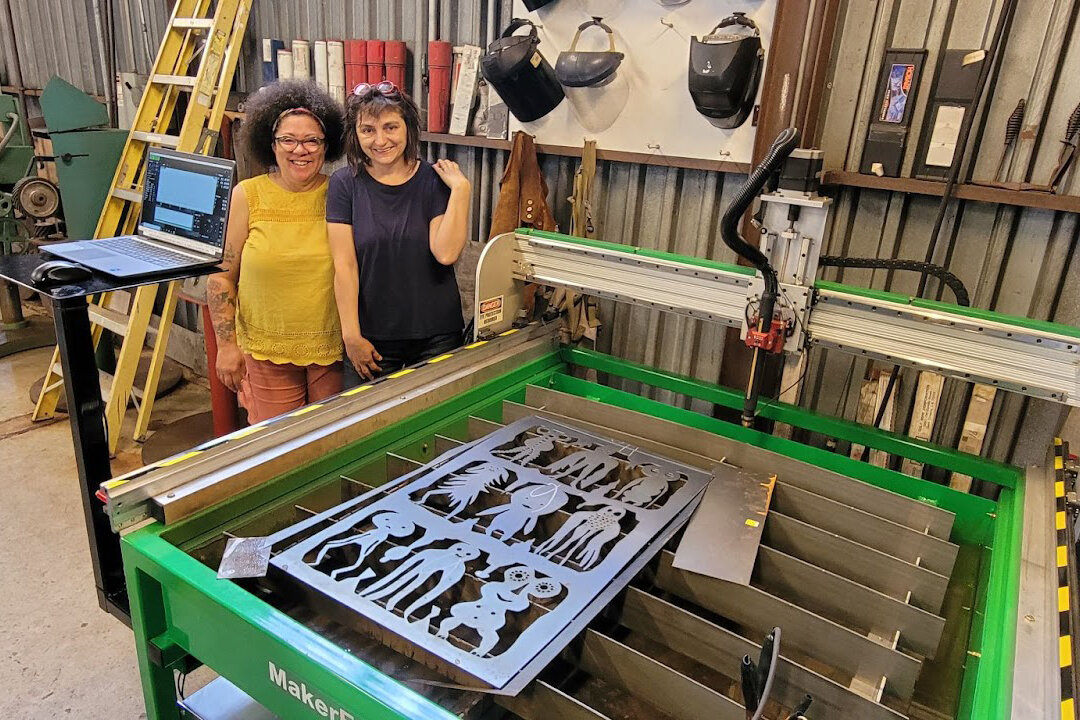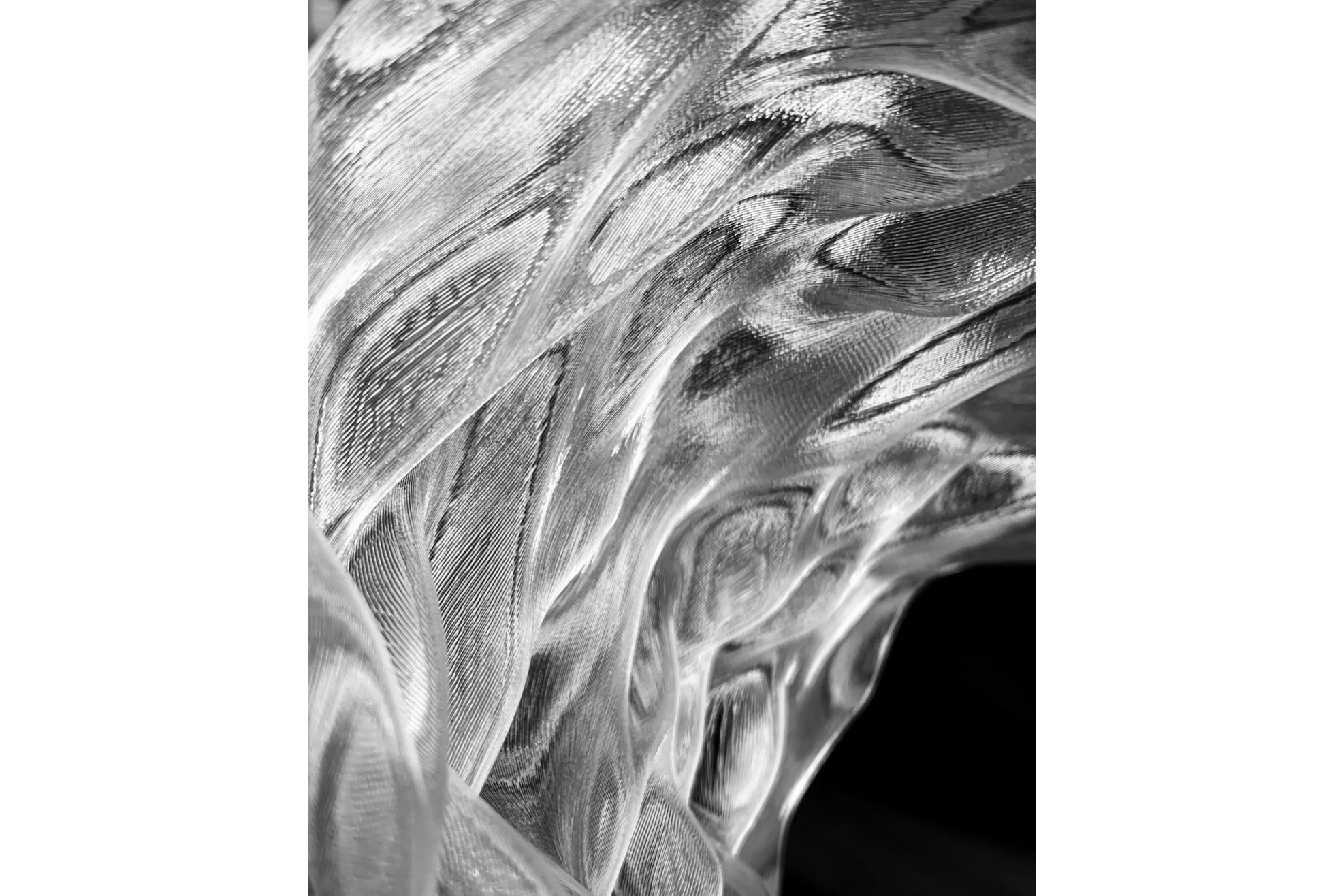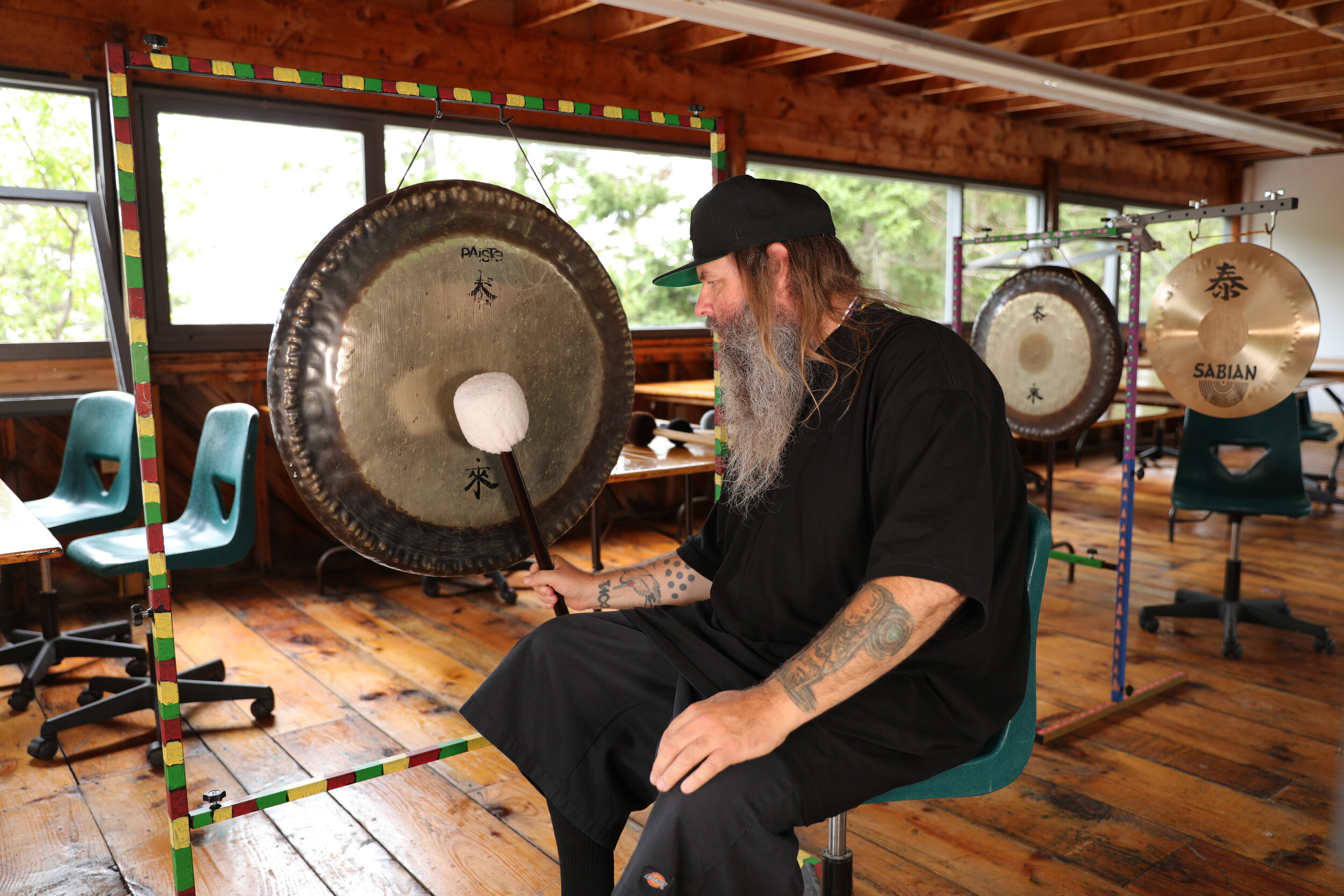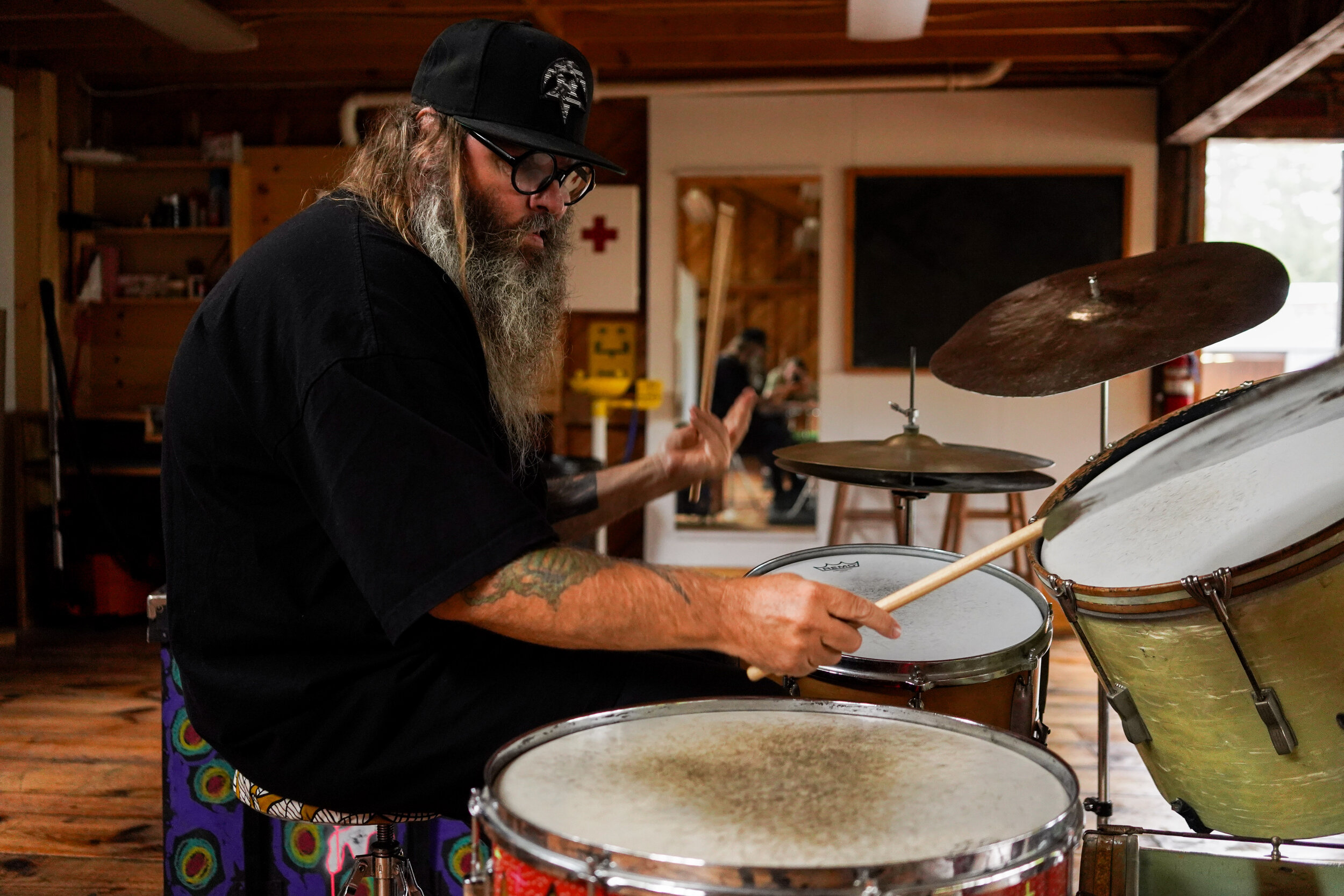Haystack Labs 2021
Haystack Mountain School of Crafts and the MIT Center for Bits and Atoms developed and piloted an experimental residential program July 12-16, 2021 that combined artists and scientists to take over the campus and explore the integration of emerging technologies and processes for craft. 12 projects emerged from the week and are described below; based on their success this is expected to become a recurring event.
PROJECTS | EVENING PRESENTATIONS
Projects
ClayStack
Jake Read, Amanda Soule
This machine grew out of an effort to produce a multi-purpose modular machine for "almost any" digital fabrication process. Here, it's fitted with a clay extruding tool in order to 3D print ceramics. Many individuals around the world including Ronald Rael and Tom Lauerman are experimenting with the process, and we were happy to bring the capability to Haystack.
Urumbot
Neil Gershenfeld, Alfonso Parra Rubio
The Urumbot (Ubot) drawing machine was a test for a motion control framework that grew out of a Fab Academy instructor bootcamp in Kerala, India. "Urumbu" is the Malayalam word for small ants found in Kerala, and like these ants Urumbu eliminates traditional machine controllers and replaces them with simplified stateless nodes. In this version a USB 3 hub was used to assign addresses, distribute power, and send individual step-and-direction commands at audio frequency rates to stepper motors. This allows the machine’s control logic to be virtualized in parallel software on the host, and the resulting machine is (almost) arbitrarily scalable for making large-format drawings.
Prismatic Planer Actuator
David Preiss
A lightweight three axis motion stage designed for high speed, low inertia motion applications. Belt driven carbon fiber rods form two prismatic (linear) actuators, which in parallel act as a 3-bar linkage with adjustable side-lengths. The machine is mounted through two posts using wood screws, allowing for the system to be easily transported or reconfigured, regardless of the working material's size or orientation. The machine's final working area is formed by the intersection of the two arm's revolved maximum length, and can also be easily configured by mounting the posts at different distances.This machine was fully designed and fabricated over the course of 4 days at Haystack Labs 2021.
MicroPanto
Zach Fredin
MicroPanto is a 50:1 pantograph reducer that converts a desktop CNC router into a micro-engraver. The machine is driven by a Handibot, whose working range is shrunk to a few millimeters with a corresponding increase in resolution. A microswitch temporarily mounted to the Handibot's Z-axis actuates a stylus which can be electronically adjusted for different workpiece heights. The working tool is a laser-turned diamond bonded to a strip of stainless shim stock with a tip radius of roughly 2 microns. After assembling the machine at Haystack, a number of substrates (polished stone, steel, obsidian, gold-coated glass, silver, rice, etc) were micro-engraved with tiny messages and designs.
Pop-up Bio Lab
Eyal Perry, Miana Smith, Lauren Fensterstock
An experimental dialogue between arts, crafts and synthetic biology. Over the course of a single week, the darkroom photography studio was converted to a pop-up bio lab. Natural samples of microorganisms were collected from the local environment around Haystack and cultivated ("microfarming"). Select organisms started to grow and express visually interesting properties, by producing fluorescent proteins that glow under black light. These microorganisms were transformed to a living material, to make glowing jewelry pieces or figures of forest beings (made out of forest beings).
Plasma Cutter
Tanya Crane, Andrea Dezso
At the start of the residency, Haystack received a 4’ x 4’ CNC Plasma Cutter as a donation from Forest Scientific. A employee of Forest Scientific accompanied the machine and trained Haystack staff and artists on how to operate the machine. From there, the machine was quickly put to use making a variety of designs from plate steel.
3D Art + Music
Matt Crane, Amira Abdel-Rahman
We experimented with different ways to translate music (Matt Crane playing the gong) into a 3D artifact. This was done by extracting the frequency of the sound recording and morphing the profile of a vessel based on these frequencies. We then 3D printed the vase using translucent PLA filament as well as in clay using the Claystack extruder. Music created from 28” Paiste Symphonic gong with a relative fundamental pitch of E flat. Struck with Vic Firth Soundpower GB 1 gong mallet.
Voxel Moth Habitat
Amira Abdel-Rahman, Miana Smith
In this project, similar to a lego construction kit, we experimented with creating different press-fit joints for high-performance lattice structures.
Multimaterial Printing
Jack Forman
“DefeXtiles are thin, flexible textiles of many materials that can quickly be printed into a variety of 3D forms using an inexpensive, unmodified, 3D printer with no additional software…”
Biomaterials and Composites
Patritsia Stathatou, Alfonso Parra Rubio
In an effort to substitute long, wasteful and complex supply chains for sourcing materials to Haystack, we tried to see what materials we could create on-site from easy-to-find, locally available resources. We used agar, a jelly-like substance obtained from algae, gelatin derived from pork collagen, and vegetable glycerol to make bioplastic sheets that could be used for packaging. In addition, we blended these bioplastic resins with a fine eggshell powder, made from Haystack kitchen’s waste, and infused with it sustainable natural fabrics, made from organic cotton, linen and hemp, to create stronger biocomposites that could be used for making ornamental and structural materials.
Evening Presentations
July 12 - Making, the Pandemic, and Crisis Responses
A discussion about some of the ways in which digital fabrication and Fab Labs have responded to the COVID-19 pandemic, and other disasters. Participants will hear from a diverse group of leaders in the field and learn about the ways in which Fab Labs can have an impact on local and global communities.
Research - Neil Gershenfeld, Zach Fredin, Alfonso Parra Rubio & Camron Blackburn
Pandemic Response - Vaibhav Chhabra, & Richa
Disaster Recovery - Pradia Pradhan, Pallab Shrestha & Bahar Kumar
Refugee Camps - Nadine Tuhaimer
July 13 - Digital Fabrication & Craft: Education, Innovation, and Making
A discussion on how digital fabrication and Fab Labs can be integrated into studio-based learning environments, such as Haystack. We will discuss the various ways in which digital fabrication and Fab Labs can be used to enhance or assist in various domains. Finally, we will discuss the ways in which digital fabrication can be taught.
Panelists: Neil Gershenfeld, Saul Griffith, Jonathan Grinham, and Sophia Zelov
July 14 - Sustainability and Biomaterials
A discussion on how Fab Labs intersect with biomaterials and the circular economy. Participants will be introduced to this field of research and making as well as some example projects. This includes an exploration of Materiom, an open-source library for making biomaterials.
Biomaterials & Circular Economy
Materiom Open Data Platform for Biomaterials
Biovoxels project & show-and-tell
Panelists: Patricia Stathatou, Alycia Garmulewicz, Patricia Stathatou, Alfonso Parra Rubio, Eyal Perry, and Miana Smith
July 15 - Making Machines
Wrapping up the week of collaboration in the Fab Lab, this discussion will share ideas and possibilities for new ways of thinking about the Fab Lab on the Haystack campus. This discussion is largely shaped by the emergent findings and creations from the week.


